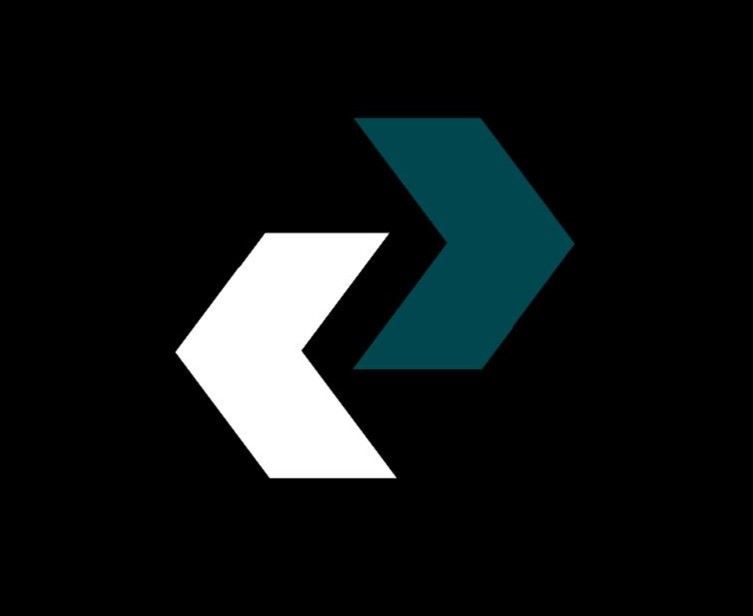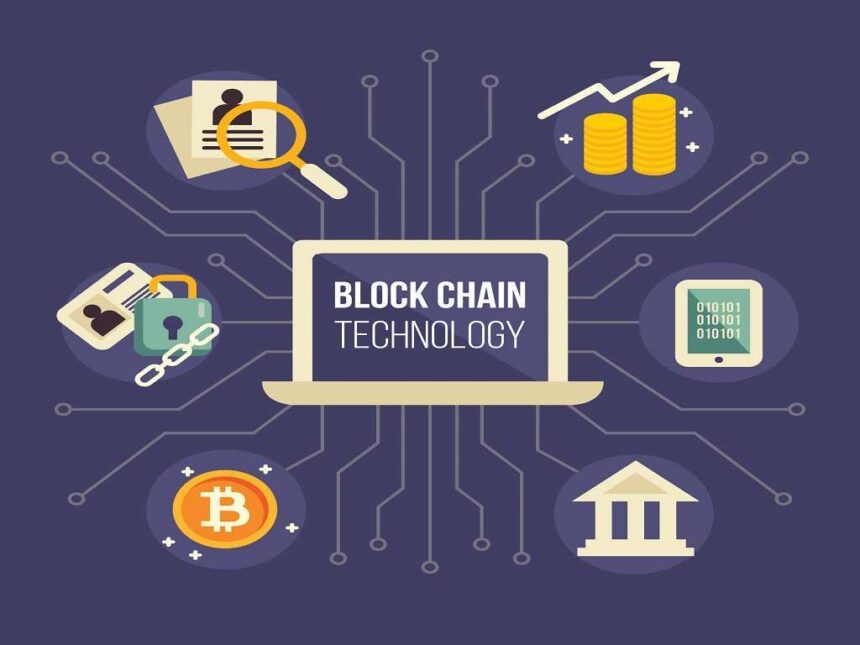When most people hear the term “blockchain,” they immediately think of Bitcoin and other cryptocurrencies. However, blockchain technology is far more than a foundation for digital currencies. It has the potential to revolutionize a wide array of industries, from finance and healthcare to supply chain management and entertainment.
By providing a decentralized, secure, and transparent method for recording and verifying transactions, blockchain is transforming traditional systems and fostering innovation.
1. What is Blockchain Technology?
Blockchain is a distributed ledger technology (DLT) that stores data across multiple nodes or computers in a decentralized manner. Each block in a blockchain contains a set of data, a timestamp, and a cryptographic hash of the previous block, linking them together to form a chain. This ensures that data is immutable, transparent, and resistant to tampering, making blockchain a trusted solution for recording transactions.
a) Key Features of Blockchain
- Decentralization: Unlike traditional systems that rely on a central authority, blockchain operates on a decentralized network of nodes.
- Transparency: All transactions on a blockchain are visible to network participants, enhancing transparency and trust.
- Immutability: Once data is recorded on a blockchain, it cannot be altered or deleted, providing a tamper-proof record of transactions.
- Security: Blockchain uses cryptographic techniques to secure data, making it highly resistant to hacking and fraud.
2. Blockchain in Finance and Banking
The finance and banking industry was among the first to adopt blockchain technology. Its potential to streamline processes, reduce costs, and enhance security has made it an attractive solution for financial institutions.
- Advertisement -
a) Cross-Border Payments
Traditional cross-border payments often involve multiple intermediaries, resulting in high fees and lengthy processing times. Blockchain-based solutions, such as Ripple’s XRP, offer faster and cheaper transactions by eliminating intermediaries and providing a direct, transparent system for moving money across borders.
b) Decentralized Finance (DeFi)
DeFi platforms leverage blockchain to offer financial services such as lending, borrowing, and trading without the need for traditional banks. By using smart contracts, DeFi eliminates intermediaries, reduces costs, and increases access to financial services for underserved populations.
c) Fraud Prevention and Security
Blockchain’s immutability and transparency make it an effective tool for combating fraud in the financial sector. Transactions are recorded in a tamper-proof ledger, making it nearly impossible to alter or delete data without detection.
3. Blockchain in Supply Chain Management
The supply chain industry is plagued by inefficiencies, lack of transparency, and fraud. Blockchain technology addresses these challenges by providing a transparent and secure way to track and trace products throughout their lifecycle.
a) Enhanced Traceability
Blockchain enables real-time tracking of goods from the point of origin to the end consumer. This is particularly important for industries such as food and pharmaceuticals, where traceability ensures product safety and quality.
Example: IBM’s Food Trust blockchain network helps track the journey of food products, reducing the time needed to trace the source of contaminated food from weeks to seconds.
b) Eliminating Counterfeit Products
Counterfeit goods are a major issue in global trade. Blockchain allows for the creation of digital certificates of authenticity, making it easier to verify the origin and authenticity of products.
c) Supply Chain Efficiency
Smart contracts can automate processes such as payments, order fulfillment, and inventory management, reducing the need for manual intervention and improving efficiency.
4. Blockchain in Healthcare
Healthcare is another industry that stands to benefit immensely from blockchain technology. The ability to securely store and share patient data, improve transparency, and streamline administrative processes is transforming healthcare delivery.
a) Secure Patient Data Management
Blockchain provides a secure and tamper-proof way to store patient data. Patients have control over who can access their medical records, enhancing data privacy and security.
Example: Medicalchain uses blockchain to give patients control over their health records and allows them to share access with healthcare providers as needed.
b) Drug Traceability
Blockchain can help prevent counterfeit drugs from entering the supply chain by providing a transparent and tamper-proof record of each step in the drug manufacturing and distribution process.
c) Clinical Trials and Research
Blockchain can improve the transparency and integrity of clinical trials by ensuring that data is securely recorded and cannot be altered. This reduces the risk of data manipulation and increases trust in the results.
5. Blockchain in Real Estate
The real estate industry is known for its complex processes, high transaction costs, and lack of transparency. Blockchain is revolutionizing real estate by streamlining transactions, reducing costs, and increasing transparency.
a) Property Title Management
Blockchain can simplify the process of recording and transferring property titles. By creating a transparent and tamper-proof record of property ownership, blockchain reduces fraud and disputes related to title deeds.
b) Smart Contracts for Real Estate Transactions
Smart contracts automate various aspects of real estate transactions, such as payment transfers and contract execution. This reduces the need for intermediaries, speeding up the process and lowering costs.
c) Tokenization of Real Estate Assets
Blockchain allows for the tokenization of real estate assets, enabling fractional ownership and making it easier for investors to buy and sell shares in properties. This increases liquidity and provides more opportunities for investment.
6. Blockchain in Identity Management

Identity theft and fraud are major issues in the digital age. Blockchain offers a secure and decentralized way to manage digital identities, providing individuals with greater control over their personal information.
a) Self-Sovereign Identity (SSI)
SSI solutions allow individuals to create and manage their own digital identities using blockchain technology. Users can selectively share specific pieces of information with third parties, enhancing privacy and security.
b) KYC and AML Compliance
Blockchain can streamline Know Your Customer (KYC) and Anti-Money Laundering (AML) processes by providing a secure and verifiable record of customer information. This reduces the time and cost of compliance for financial institutions.
c) Identity Verification for Voting and Governance
Blockchain-based voting systems can improve the security and transparency of elections by providing a tamper-proof record of votes and ensuring that each vote is counted accurately.
7. Blockchain in Entertainment and Media
The entertainment industry is exploring blockchain to improve transparency, protect intellectual property, and create new revenue streams for artists and content creators.
a) Royalty and Revenue Distribution
Blockchain can ensure fair distribution of royalties to artists, musicians, and creators by providing a transparent record of how content is consumed and monetized. Smart contracts can automatically distribute payments based on pre-defined terms.
b) Non-Fungible Tokens (NFTs)
NFTs have gained widespread popularity as a way to represent ownership of digital and physical assets, such as artwork, music, and collectibles. By leveraging blockchain, NFTs provide a way to verify the authenticity and provenance of digital assets.
c) Content Distribution and Copyright Protection
Blockchain can help combat piracy and protect intellectual property by creating a transparent record of content ownership and usage rights.
8. Blockchain in Energy and Sustainability
Blockchain is playing a key role in creating a more sustainable and decentralized energy market by enabling peer-to-peer (P2P) energy trading, enhancing grid management, and promoting renewable energy.
a) Peer-to-Peer Energy Trading
Blockchain allows consumers to buy and sell excess energy directly with each other, reducing reliance on centralized energy providers. P2P energy trading platforms use smart contracts to automate transactions and ensure fair pricing.
Example: Brooklyn Microgrid is a P2P energy trading platform that enables residents to trade excess solar energy with their neighbors using blockchain.
b) Carbon Credit Trading
Blockchain can enhance the transparency and efficiency of carbon credit markets by providing a tamper-proof record of carbon offset transactions. This helps reduce fraud and ensures that credits are accurately tracked and traded.
c) Decentralized Energy Management
Blockchain can facilitate the integration of renewable energy sources into the grid by enabling real-time data sharing and automated grid management. This improves grid stability and reduces reliance on fossil fuels.
9. Challenges and Limitations of Blockchain Technology
While blockchain offers numerous benefits, it is not without challenges. Some of the key limitations include:
a) Scalability Issues
Blockchain networks can face scalability challenges, particularly in terms of transaction speed and capacity. Solutions such as layer-2 protocols and sharding are being developed to address these issues.
b) Energy Consumption
Proof-of-Work (PoW) blockchains, such as Bitcoin, consume significant amounts of energy, raising concerns about their environmental impact. Transitioning to more energy-efficient consensus mechanisms, such as Proof of Stake (PoS), can mitigate this issue.
c) Regulatory Uncertainty
The regulatory environment for blockchain and cryptocurrencies varies across countries, creating uncertainty for businesses and investors. Clearer regulatory frameworks are needed to foster innovation while ensuring consumer protection.
d) Interoperability
Many blockchain networks operate in isolation, limiting their ability to communicate and interact with each other. Interoperability solutions, such as cross-chain bridges and standardized protocols, are being developed to address this issue.
10. The Future of Blockchain Technology
The potential applications of blockchain extend far beyond the examples mentioned in this post. As the technology continues to evolve, we can expect to see new use cases and innovations that further transform industries and create more efficient, transparent, and secure systems.
The key to unlocking the full potential of blockchain lies in overcoming its current limitations and fostering collaboration between governments, businesses, and the wider blockchain community. By embracing blockchain’s transformative potential, industries can drive positive change and create a more equitable and sustainable future for all.

